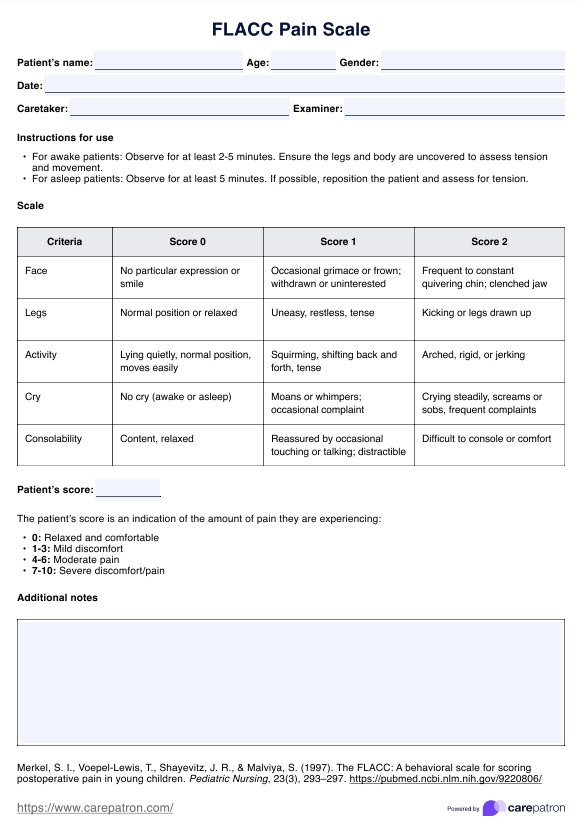The FLACC score is a behavioral pain assessment tool used in nursing to evaluate pain in patients who cannot communicate verbally. It scores five criteria: Face, Legs, Activity, Cry, and Consolability.

FLACC Pain Scale
Learn how to use the FLACC Pain Scale to assess pain in pediatric patients. Use our template for efficient and accurate behavioral pain assessment.
FLACC Pain Scale Template
Commonly asked questions
The FLACC Pain Scale is typically used for infants, young children (ages 2 months to 7 years), and individuals with communication challenges. It is one of the pain behavioural observation scales used when patients can't verbally express pain.
For sleeping patients, the FLACC scale can be used to assess pain based on behavioral cues. Other scales like the Critical-Care Pain Observation Tool (CPOT) are also used in intensive care settings.
EHR and practice management software
Get started for free
*No credit card required
Free
$0/usd
Unlimited clients
Telehealth
1GB of storage
Client portal text
Automated billing and online payments











